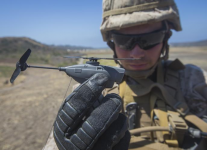I am not completely convinced, SSM.
I full agree with your last three: They should remain under the RCAF.
But I seriously doubt the first one. As indicated before, there are multiples RPA's with huge differences in scope, sizes and capabilities that don't make for one size fits all solutions.
For instance, why should the RCAF have any doctrinal input into a small field deployed quadcopter used by infantry to get a look over the next ridge? Similarly, why should the RCAF have any doctrinal input into the naval employment of smaller shipboard RPA's whose main purpose is to extend the sensor horizon, or carry out ship's identification, or would the RCAF know how to use such RPA for, say, a hot pursuit of vessels of interest? This seem to me to fall under doctrine that should come from the Army or the RCN.
As for Aircrew training and standards, again I believe it depends on what you consider to be an Aircrew. On the civilian side of things, Transport Canada issues licenses for "drone" operators - but they don't call those pilot's licenses. If you consider certain RPA's, such as the ones in my doctrine examples, to be closer to "civilian drones" than actual "airplanes", I don't see what the need would be for the RCAF to be involved in crew training and standards. The RCN or Army, as the case may be, are perfectly capable of training the operators and overseeing the standards to be met and maintained.
Of course, in the RCN, we have the advantage of deploying with Airdets that are already RCAF, so it is a much more theoretical discussion since they would most likely operate both the shipboard airframes and RPA's.







